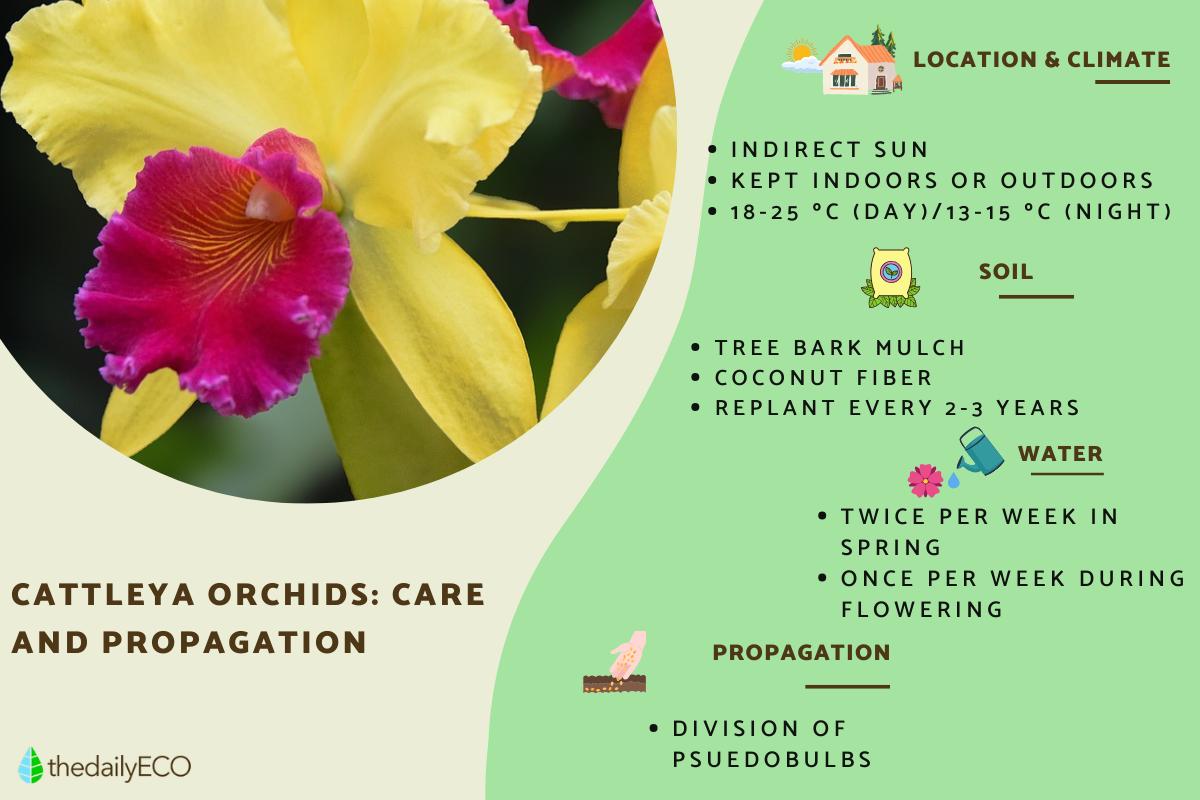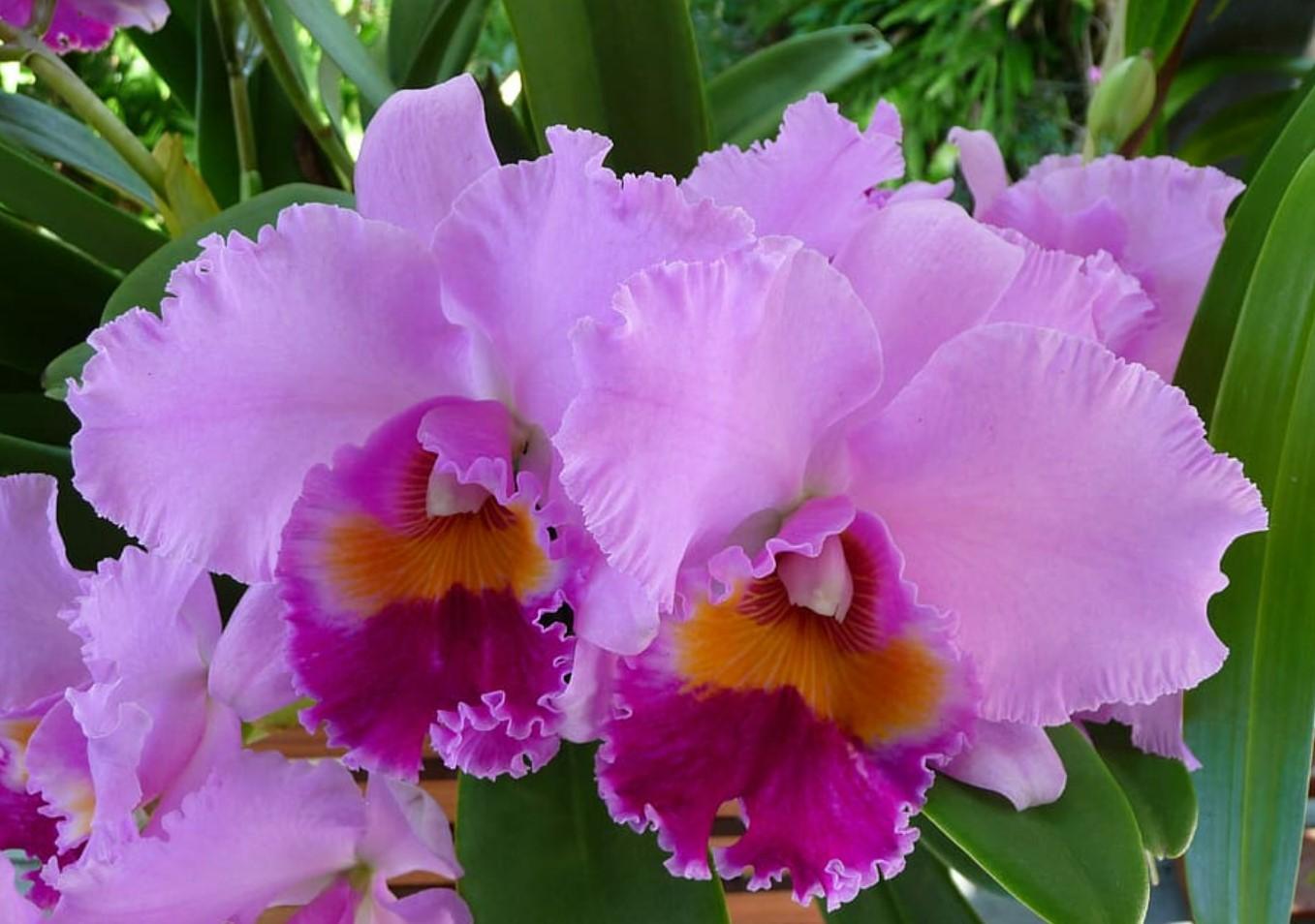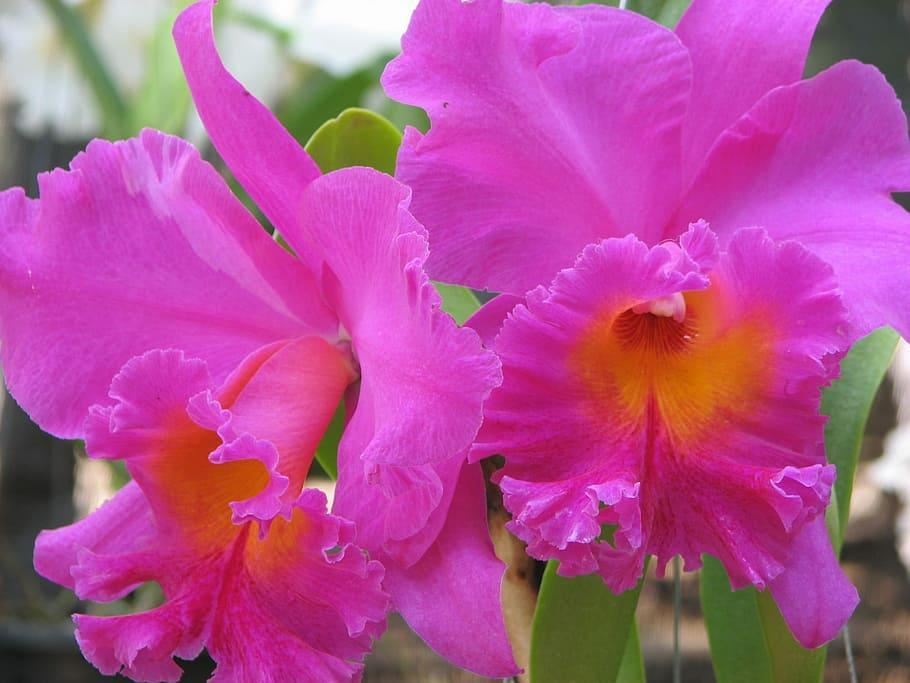Cattleya Orchid Care for Indoors and Outdoors


Caring for cattleya orchids requires abundant light, minimum daytime temperature of 18 ºC/64.4 1F, tree bark substrate and moderate watering which increases during the growth stage. To recover a cattleya orchid that is drooping, the light, soil and water conditions must be improved, in addition to cutting the damaged roots and leaves.
Orchids are one of the most sought-after flowers due to the beauty of their flowers and the exotic nature they represent. Among them we have those of the Cattleya genus, which is one of the most classic orchids and that is why it is known as the queen of orchids. It is a great option for beginners in gardening because its care is relatively easy, but its beauty is unsurpassed. Learn more with our thedailyECO guide to cattleya orchid care for indoors and outdoors.
Characteristics of the cattleya orchid
Also known as the queen of orchids or corsage orchids, these plants are orchids which belong to the genus Cattleya, of which there are over 50 species with a vast number of hybrids. Some characteristics of all cattleya orchids include:
- They are large orchids and can reach 18" (45 cm) high, with thick, smooth-textured leaves that are 12" (30 cm) wide.
- The flowers are also large and can measure up to 6" (15 cm). 2 or 3 flowers are produced at a time and will be enjoyed for 2 weeks, during the spring. They generally bloom only once a year, but there are certain cultivars that can bloom more times.
- The colors are very varied. They can be found with pink, violet, white or yellow flowers, in simple colors or playing with this range of colors. Some give off a soft aroma. Discover more of the best indoor aromatic plants with our related guide.
- The flowers frequently have wavy margins and are more flexible than those of other orchids, such as Phalaenopsis orchids.
- They have pseudobulbs where they store water to overcome seasons without rain. This is where the leaves come from. They can be monofoliate (when only one leaf emerges) or bifoliate (when they have more leaves). Monofoliate cattleya orchids produce 2 to 3 flowers and bifoliate orchids have more than 3.
- They come from Central and South America. Below, we will explain what the care requirements are to have it in conditions similar to its natural environment. This way the cattleya orchid can thrive and flower to its potential.
Although cattleya orchids are relatively common, you can find read our article to discover the rarest orchids in the world.

Light, temperature and location for cattleya orchids
We look at the ambient conditions you require for keeping cattleya orchids indoors or outdoors. Keeping them indoors can allow better control over your environment, but outdoor cattleyas can also thrive with the right care.
- Light is the most important element for this species. They live in the highest area of the tree canopy and for this reason they have a high demand for light. However, it needs to be indirect or the leaves would burn.
- The best location will be indoors near a window. If you keep cattleya orchids outdoors, you should shade them under a tree or shrub.
- An indication that the location is too hot is the temperature of the leaves. If they are hot to the touch, you should move them a little away from the window or place a curtain. If they are warm there is no problem.
- They become very heavy at the tip so it will be necessary to put a support or replant them so that they do not fall.
- As for the ideal temperature, during the day it should be around 18 ºC to 25 ºC (64.4-77 ºF) and 13 ºC to 15 ºC (55.4-59 ºF) at night.
- The planter in which it is placed must be transparent because the roots photosynthesize, so avoid the temptation of putting it in a pretty or decorative pot. Use the link below to purchase some clear nursery pots for young orchids.

Soil, fertilizer and transplant for cattleya orchids
We now look at the soil, substrate and fertilizer for indoor and out door cattleyas:
- Cattleya orchids are types of epiphytic plants, so they need soil adapted to these conditions. Tree bark mulch will be used as a substrate, as well as adding a handful of coconut fiber. This will simulate a tree and the cattleya will be like in its natural habitat.
- They need to be transplanted every 2 to 3 years, by which time the substrate will have decomposed. You have to wait 1 or 2 weeks after there is no longer flowering to do it and prevent them from drying out. This will be approximately during the summer.
- It is recommended to add fertilizer, preferably a special fertilizer for orchids, every two weeks during flowering.
Learn about the difference between compost and fertilizer in our related article.
Watering the Cattleya Orchid
You will need t consider the following for cattleya orchid irrigation:
- They are less sensitive to environmental humidity than other orchids, which makes them an excellent species for beginners.
- Due to their pseudobulbs, they can tolerate a lack of watering, but it is best to give them as much as is necessary.
- You have to water them twice a week during the growing season, this being in spring.
- Once flowering has finished, watering will be done only once a week.
- If the temperature drops below 18 ºC/64.4 ºF, it will only be necessary to add water every 2 weeks.
- It is not necessary to spray the leaves with water, only if stoves or heaters are used during the winter once a day.
- The flower buds should not be moistened or they may develop spots of mold.
Learn what mold can do to a plant with our article on why my plant has black spot on its leaves.

Cattleya orchid propagation
The easiest method of cattleya orchid propagation is by division where the pseudobulbs are separated to form two plants. When the orchid grows enough in its own pot, it will form new plants from the initial one. These are the ones that we can divide. This propagation will be useful when it has grown too much over its previous container. You have to be careful with the roots when doing so to break them as little as possible.
It is recommended to apply cinnamon to each cut made, with always disinfected pruning shears, as it will serve as a bactericide. It is important that this method is only done if the plant has at least 3 vertical groups, because otherwise the propagation will not be successful.

Helping a cattleya orchid that is sick
Although cattleya are relatively hardy compared to other orchid species, they can still experience problems. If you reach them in time, you can use the following to recover your cattleya orchids:
- One of the main causes that affect Cattleya is excessive watering. To recover it, you will have to ensure that the substrate has good drainage and allows the roots to dry quickly. If there is root rot, the leaves of the plant will be very soft and will fall apart to the touch. By changing the substrate and spacing out watering, the plant will improve.
- If the leaves are wrinkled it is a lack of water , so the frequency must be increased.
- Weak, drooping, dark green leaves are indicative of a lack of light, so they should be moved closer to a source with more abundant sun.
- When the leaves are yellow and have brown spots, it is due to excess light.
- To maintain the plant and recover it from any of the previous conditions, it will be necessary to cut all the leaves that are in poor condition. Check the roots by removing them from the container and cutting all those that are not green, i.e. those that are dry or rotten. Place back in the container, add a little fertilizer and water.
Learn how you can help revive another popular indoor and outdoor plant with our article on Christmas cactus plant problems.
If you want to read similar articles to Cattleya Orchid Care for Indoors and Outdoors, we recommend you visit our Plant care and cultivation category.
- Zachos, E. (2002) Orchid Growing for Wimps . New York: Sterling Publishing.









